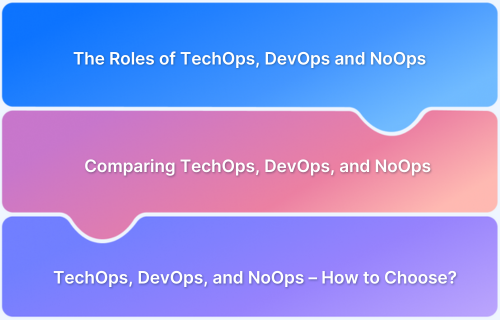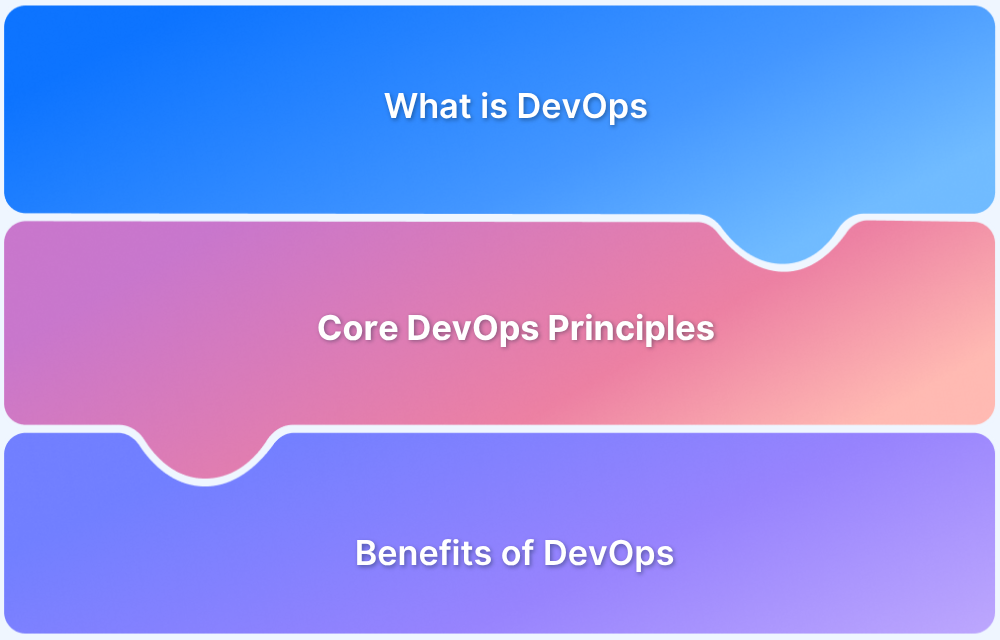TechOps, or Technology Operations, is an important part of modern IT systems management. It focuses on keeping technology infrastructure stable and reliable and making sure everything runs smoothly. Understanding TechOps can help see how it supports efficiency and enables businesses to succeed.
This article explores TechOps’s core principles and functions and how they help organizations navigate the technical complexities.
What is TechOps?
TechOps, or Technology Operations, refers to processes and practices focused on managing and maintaining an organization’s IT infrastructure and systems. It ensures that all technology services run effectively, supporting day-to-day operations.
The TechOps team takes care of different technical components, like servers, networks, and databases, to make sure everything works correctly.
The main objective is to offer a stable and secure environment for technology services so that the business operates effortlessly. This is crucial for helping the overall business achieve its goals and also provide customer satisfaction.
Key Functions of TechOps
The key functions of TechOps include:
- System Monitoring & Maintenance: Ensure continuous monitoring of systems & applications & avoid downtime by using proactive maintenance.
- Incident Management: Detect, log, and resolve incidents quickly with minimal business disruptions.
- Infrastructure Management: Manage both physical and cloud infrastructure for scalability and performance optimization.
- Automation: Automate things like backups, monitoring and deployments to improve efficiency.
- Security Management: Apply security measures, manage access controls, and get compliance with regulations.
- Backup & Disaster Recovery: Back up data regularly and test for the response in case of disaster recovery.
- Capacity Planning: Forecast infrastructure needs and optimize resources to handle growth.
- Change & Release Management: Oversee infrastructure changes and software releases using CI/CD processes to minimize service disruptions.
- Collaboration: Work closely with development, security, and business teams to support operational needs and ensure smooth updates.
Read More: Agile vs DevOps: Differences
Benefits of TechOps
TechOps is a powerful approach that helps companies improve collaboration and speed up their processes.
Here are some of the key benefits of TechOps:
- Better Team Collaboration: TechOps encourages developers & operations teams to work together. This creates better communication and faster problem solving.
- Faster Feature Delivery: TechOps speeds up the launch process of new features and updates by automating tasks. This means the businesses stay competitive by getting improvements more quickly, and customers get the improvements faster.
- Higher Product Quality: With continuous testing built into the process, bugs are caught early. This makes sure that products are reliable and perform well for customers.
- Cost Efficiency: Automation and cloud services allows TechOps to reduce manual work and optimize resources. This helps businesses scale up or down and save money.
- Improved System Reliability: Constant monitoring and maintenance ensure that systems stay stable and experience less downtime, keeping operations smooth and dependable.
- Greater Flexibility: TechOps allows businesses to adapt quickly to changes in the market or customer needs, helping them stay agile and innovative.
- Competitive Advantage: TechOps enables businesses to roll out updates faster than their rivals & get into the market first.
- Stronger Security: TechOps helps in reducing risks and keeping data safe by integrates various security measures early in the development process.
- Increased Employee Satisfaction: Automating repetitive tasks helps employees focus on more meaningful tasks, making them happier and more engaged.
- Better Customer Experience: Customers benefit from reliable products & faster updates, leading to higher satisfaction and loyalty
Also Read: Why is DevOps Important?
What is DevOps?
DevOps is a set of practices that combines software development (Dev) and IT operations (Ops) to improve collaboration, speed up the software delivery process, and ensure higher quality and reliability.
The goal of DevOps is to automate tasks like deployment, testing and monitoring to ensure faster and more frequent updates.
DevOps enables teams to work together more efficiently by making sure the software is developed, tested, and released in shorter cycles while keeping stability and security in mind.
Differences Between TechOps and DevOps
Here’s a table comparing TechOps and DevOps across various characteristics:
| Characteristic | TechOps | DevOps |
|---|---|---|
| Focus | Ensures stability and availability of technology infrastructure for smooth operations. | Aims to speed up software delivery and improve quality through collaboration and automation. |
| Tasks | Manages servers, networks, and databases and responds to incidents quickly. | Involves continuous integration, delivery, and automation of testing and deployment. |
| Collaboration | Limited teamwork between development and operations, often leading to silos. | Strong collaboration between development and operations teams to achieve common goals. |
| Goal | Maintains system stability and minimizes downtime for users. | Enhances speed and quality of software delivery for quicker releases and better features. |
| Approach to Automation | Focuses on automating maintenance tasks for efficiency. | Integrates automation throughout the software development lifecycle for overall effectiveness. |
| Performance Monitoring | Monitors infrastructure health to address issues proactively. | Monitors application performance to meet user expectations after deployment. |
| Cultural Aspects | A more siloed environment with limited interaction between teams. | Encourages open communication and collaboration for shared responsibility. |
| User Experience | Prioritises reliability and uptime for user satisfaction. | Focuses on delivering features that enhance the overall user experience. |
What Does a TechOps Engineer Do?
TechOps Engineer is a role focusing on the smooth running of software on the grounds of infrastructure, application and security. They are the backbone of an organization’s technology operations, working to maintain system reliability and performance.
Some of the key responsibilities of a TechOps Engineer are:
- Troubleshooting Applications: Pinpoint the root causes for the problems in the application & resolve them, ensuring a smooth user experience.
- Supporting Development Teams: Help software development teams in implementing infrastructure changes or upgrades, ensuring seamless integration & operation.
- Monitoring System Health: Monitoring & maintaining the availability and performance of critical applications and systems to eliminate downtime.
- Optimizing Cloud Performance: Allow all the software environments inside the cloud infrastructure to run at maximum efficiency to maximize overall performance.
- Ensuring Compliance and Security: Adhere to regulatory standards and implement robust security measures to protect organizational assets.
- Updating Security Processes: Continuously assess existing security protocols & adopt new technologies to stay ahead of potential threats.
- Testing Disaster Recovery Plans: Perform periodic tests to verify if disaster recovery (DR) processes are effective and are up to date.
- Facilitating Collaboration: Act as a bridge between internal & external teams to address problems quickly.
Also Read: Prerequisites for DevOps Engineers
Top TechOps Tools and Technologies
1. Monitoring Tools
Monitoring is essential for maintaining the health and performance of IT systems. It allows teams to ensure that all parts of their infrastructure are functioning correctly and efficiently, minimizing downtime and improving service reliability.
Here are some popular monitoring tools:
- Nagios: A powerful monitoring system that allows you to monitor your whole IT infrastructure making sure all your systems are up and running smoothly.
- Prometheus: An open-source monitoring tool that collects metrics & provides powerful queries to help teams monitor their services efficiently.
- New Relic: Provides real time performance insights, helping teams troubleshoot & optimize their applications efficiently.
- Datadog: A cloud-based monitoring & analytics platform that provides comprehensive insights across applications & infrastructure.
Read More: Top Monitoring Tools in DevOps
2. Automation and Scripting Tools
Automation is key to improving efficiency and reducing manual work. Automation in TechOps streamlines processes, reduces manual workload, and increases efficiency, making it crucial for modern operations. Here are key tools used in automation and scripting:
- Ansible: An open-source automation tool that helps with configuration management, application deployment, and task automation.
- Python: A versatile scripting language widely used for automation scripts, data analysis, and web applications.
- Terraform: An infrastructure as a code tool that allows you to build, change, and version your infrastructure safely and efficiently.
- Jenkins: A CI/CD tool that automates the building and testing of code.
3. Security Tools and Practices
Security is a critical pillar in TechOps, ensuring that systems are protected against threats, vulnerabilities, and unauthorized access. Here are some tools and practices that enhance security measures:
- Splunk: A data analysis platform that helps organizations monitor, investigate, and respond to security threats effectively.
- OWASP ZAP: An open-source web application security scanner that helps identify vulnerabilities in web applications.
- CyberArk: Provides advanced security solutions for managing and protecting privileged accounts.
4. Cloud Management Platforms
Effective management of cloud resources ensures optimal performance, cost management, and security compliance in cloud environments. Here are platforms that help manage and orchestrate cloud services:
- AWS Management Console: Offers tools for managing AWS services and resources in a user-friendly interface.
- Google Cloud Console: A web-based interface to manage Google Cloud services and resources effectively.
- Azure Portal: A unified console to manage Azure services, applications, and resources.
5. Testing Tools in TechOps
Testing tools are fundamental to TechOps, helping to ensure that software products are reliable, perform well, and meet security standards before they are deployed.
There are testing tools that provide manual testing, automated testing or both. Different tools cover various testing types including cross platform testing, unit testing, functional testing, integration testing, performance testing, security testing, visual testing, etc.
Effective use of testing tools within TechOps supports continuous integration and delivery pipelines, enhancing the quality and reliability of software releases. Here are some notable testing tools used in TechOps:
- Selenium: Automates browsers to execute robust web application testing across multiple platforms and languages.
- BrowserStack: It is a suite of testing tools that provides manual and automated testing. It offers cloud-based access to multiple browsers, operating systems, and real mobile devices for web and mobile application testing.
- Cypress: Delivers a full end-to-end testing experience, enabling fast, easy, and reliable browser testing for modern web applications.
Can DevOps Specialists Perform TechOps Roles?
DevOps and TechOps share some responsibilities, but they serve different functions.
- DevOps professionals manage CI/CD pipelines, automate deployments, monitor system performance, and use cloud services.
- TechOps covers a broader scope, including hardware setup, networking, and security.
While DevOps specialists can handle some TechOps tasks, they are not a complete replacement. TechOps requires hardware, networking, and security expertise, which DevOps does not traditionally cover. For a well-rounded IT strategy, both roles are essential.
Challenges in TechOps
Some key challenges in TechOps include:
- Cultural Shift: To adapt to TechOps, you will need a different mindset. Failing to cultivate open communication with the team can slow down progress. Hence, collaboration is essential for smooth transitions.
- Skill Gap: TechOps relies heavily on automation and cloud technology, which may not be familiar to existing staff. Filling these skill gaps by investing on trainings can help employees to be successful in their roles.
- Tool Selection: Choosing the right tools for your organization can feel overwhelming since there are a number of tools available. Taking the time to research options and talk to experts can ensure you make informed decisions that work for your team.
- Security Concerns: Implementing strong security measures while integrating them into the development process is crucial. Engaging with security specialists can help identify and mitigate potential risks early on.
- Legacy Systems: Many organizations still rely on older systems that may not be compatible with new TechOps practices. A phased approach to modernization can make the transition smoother and less disruptive.
- Compliance: Keeping up with industry regulations can be challenging, requiring careful attention to detail. Seeking guidance from legal and compliance experts can help navigate these complexities effectively.
- Monitoring Complexity: Real-time monitoring of various systems can be daunting, especially with large and intricate environments. Implementing user-friendly monitoring solutions can simplify this process and provide actionable insights.
- Resource Allocation: Ensuring that development and operations teams are given the resources they need is tricky. Data-driven insights can help them optimize their resource allocation and avoid clashes between teams.
Best Practices for TechOps
Some of the TechOps best practices to keep in mind are:
- Promote Collaboration: Encourage open communication & collaboration between development and operations teams to tear down silos and promote a shared goal-setting environment.
- Automate Where Possible: Automate testing, deployment and monitoring to streamline processes and reduce human error.
- Regularly Monitor Systems: Use monitoring tools to keep an eye on system performance and availability, addressing issues proactively before they affect users.
- Implement Robust Security Practices: Integrate security measures throughout the development process to protect against vulnerabilities.
- Continuously Learn and Adapt: Keep up to date with the latest trends & technologies so that processes and practices can be improved continuously.
- Document Everything: Make sure to maintain clear documentation of all processes, configurations and workflows to ensure knowledge is shared and easily accessible.
- Test Disaster Recovery Plans: Regularly verify that your disaster recovery plans are effective and ensure that your systems can recover quickly from outages.
Conclusion
TechOps is essential for maintaining a robust, secure, and scalable IT infrastructure. It ensures businesses can stay agile and competitive. TechOps teams can proactively address challenges, optimize system performance, and minimize downtime by integrating modern tools for monitoring, automation, testing, and security.
Leveraging cloud technologies and establishing collaboration across teams further enhances operational efficiency and business agility.
For organizations looking to optimize their testing processes, BrowserStack Automate provides a reliable solution with access to 3500+ real devices, built-in debugging capabilities, and support for a wide range of testing frameworks, parallel testing, and CI/CD integration. It is one of the best testing tools that provide accurate and efficient results across diverse environments.







